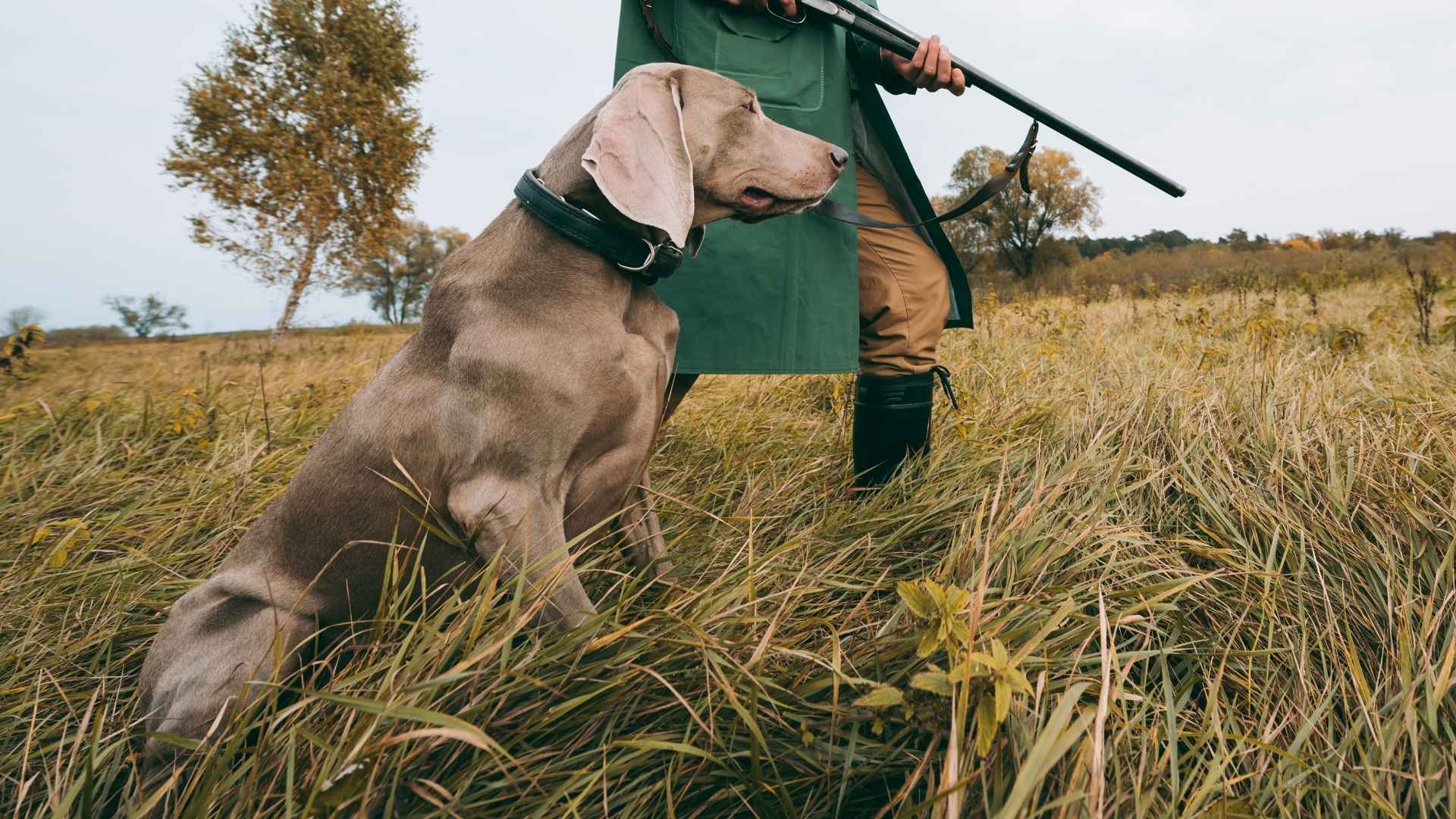There’s nothing quite like heading out into the wilderness with a trusted hunting companion by your side—especially when that companion has four legs, a wagging tail, and a nose that seems to know more than any GPS.
In fact, the American Kennel Club currently recognizes 30 different breeds in its Sporting Group—a category made up of hunting dogs originally bred to locate, track, and retrieve game. These dogs are known for their natural instincts, intelligence, and ability to work closely with hunters in all kinds of terrain and weather conditions.
Of course, not all dog breeds are cut out for deer hunting—it takes a special mix of stamina, obedience, and smarts. Whether you’re an experienced tracker or just stepping into the world of dog hunting, choosing the right hunting companion can make all the difference. And if you’re someone who enjoys both outdoor activities and bonding with energetic dogs, some hunting breeds can also double as a great family dog.
So if you’re ready to discover the top dog breeds that help hunters retrieve deer, stick around—we’re breaking down the most capable, loyal, and trained companions that love the thrill of the hunt just as much as you do.
Dog Breeds That Help Hunters Retrieve Deer
1. Mountain Cur
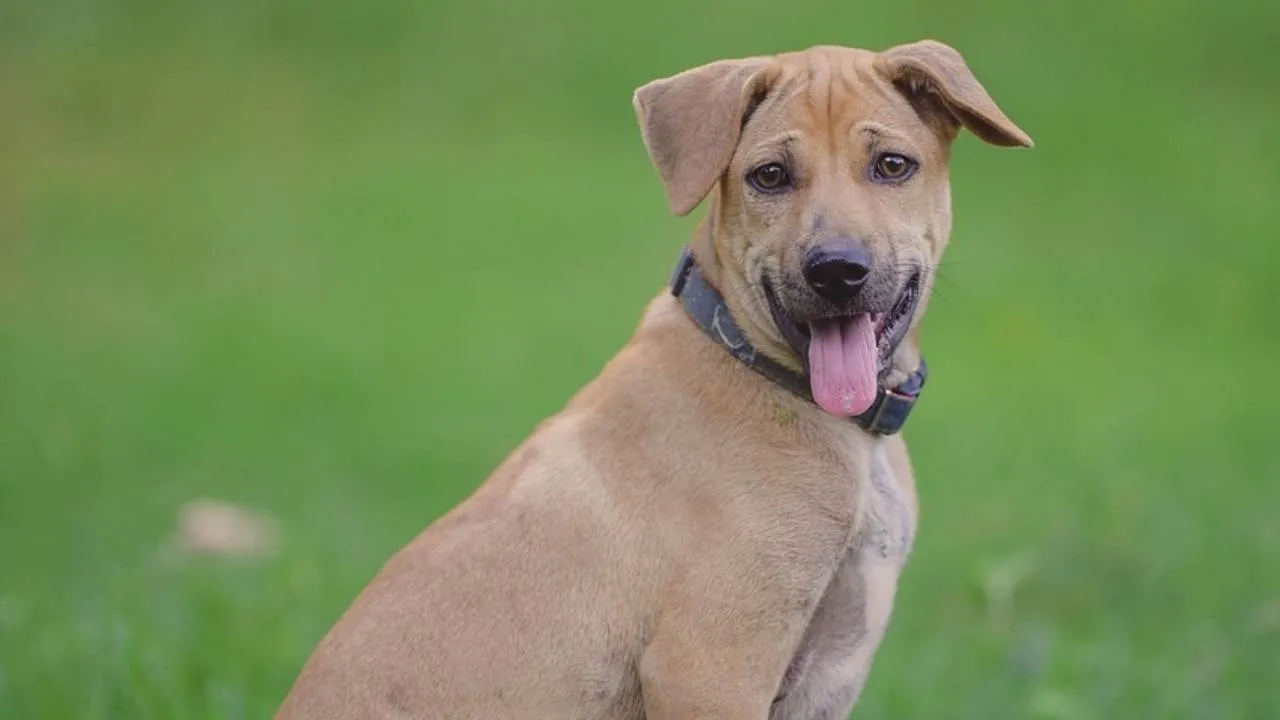
The Mountain Cur was developed in Arkansas, Kentucky, Oklahoma, Ohio, Tennessee, and Virginia. It was originally used to hunt raccoons and squirrels. Thanks to its speed, endurance, and sharp sense of smell, it is also effective in deer hunting.
These dogs have strong treeing instincts and were essential to early American pioneers and settlers. There’s even a legend that Daniel Boone kept a pack of Mountain Curs.

Mountain Curs are intelligent, loyal, and versatile. They were bred to do it all—herd cattle, track game, and guard property. They can cover a lot of ground while hunting and are known to instinctively tree prey.
They are courageous and smart, with the ability to learn quickly. Mountain Curs respond best to training that involves plenty of human interaction. Along with hunting, they also make excellent watchdogs and companions.
Hunting Profile
Primary game: Raccoons, squirrels, deer
Skills: Treeing, tracking, guarding
Temperament: Brave, intelligent, and obedient
Training: Easy to train; needs human contact
Energy level: High; covers ground quickly
2. Treeing Walker Hound
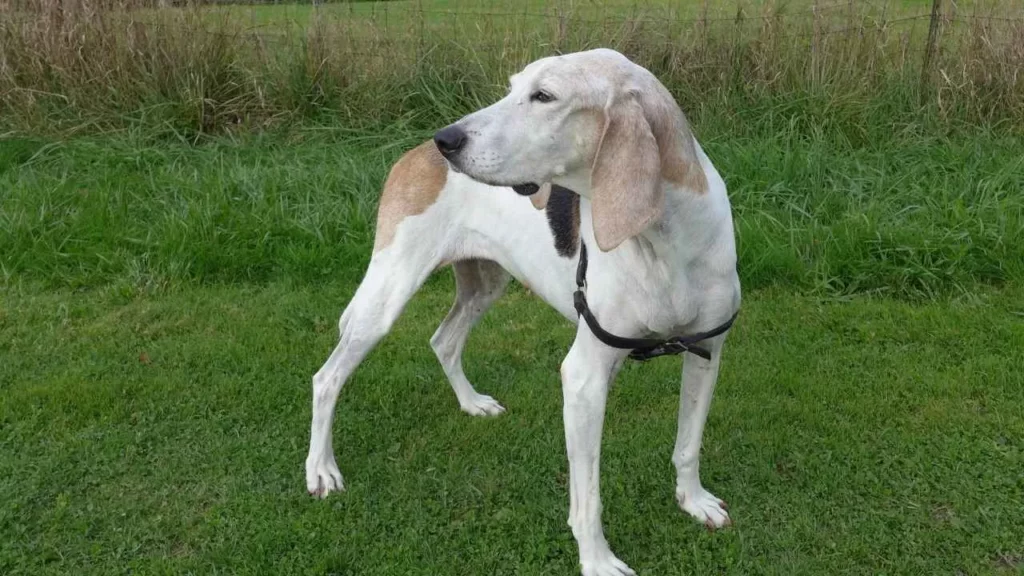
The Treeing Walker Coonhound is a fast, agile hunting dog developed in the United States. Originally bred to track and tree raccoons and other small game, it has also proven useful in deer hunting due to its strong tracking instincts.
This hound breed traces its roots to an English Foxhound brought to Virginia in 1742. Officially recognized in 1945, it has become known for its quick pace and reliable performance in the field.
Treeing Walkers are “hot-nosed” dogs that excel at following fresh scent trails. Once they locate and tree their quarry, they let out a loud, distinct bay. Though best known for raccoons, they are highly adaptable and can hunt anything from hares to deer, and even large predators like bears.
With their athletic build and strong prey drive, these hunting dogs cover ground quickly and make excellent companions for those needing a fast, focused, and hardworking tracking dog. After a long hunt, their gentle nature shines through, earning them the nickname “The People’s Choice,” as per the AKC.
Hunting Profile
Primary game: Raccoons, hares, deer, and large game
Skills: Treeing, tracking, scent trailing
Temperament: Brave, smart, loyal
Training: Responds well to consistent handling
Energy level: High; agile and fast
3. Plott Hound
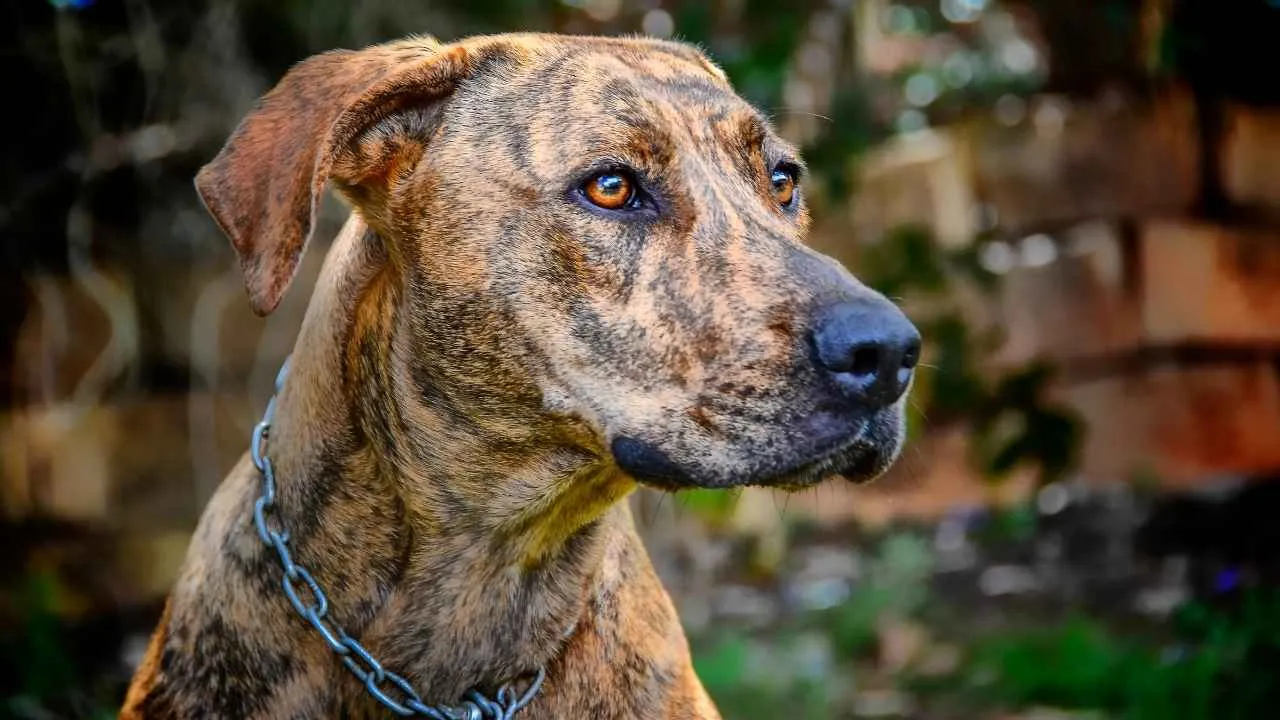
The Plott Hound is an agile, athletic state dog originally bred in North Carolina. Known for its stamina and strength, this scent hound was developed to track large game like bears and boars. Today, it’s a top choice for tracking deer through thick brush and rugged terrain.
These dogs have a loud, choppy bark that helps hunters follow them during the chase. With strong legs, sharp noses, and endless drive, Plott Hounds excel at navigating dense woods to locate other animals, especially deer.
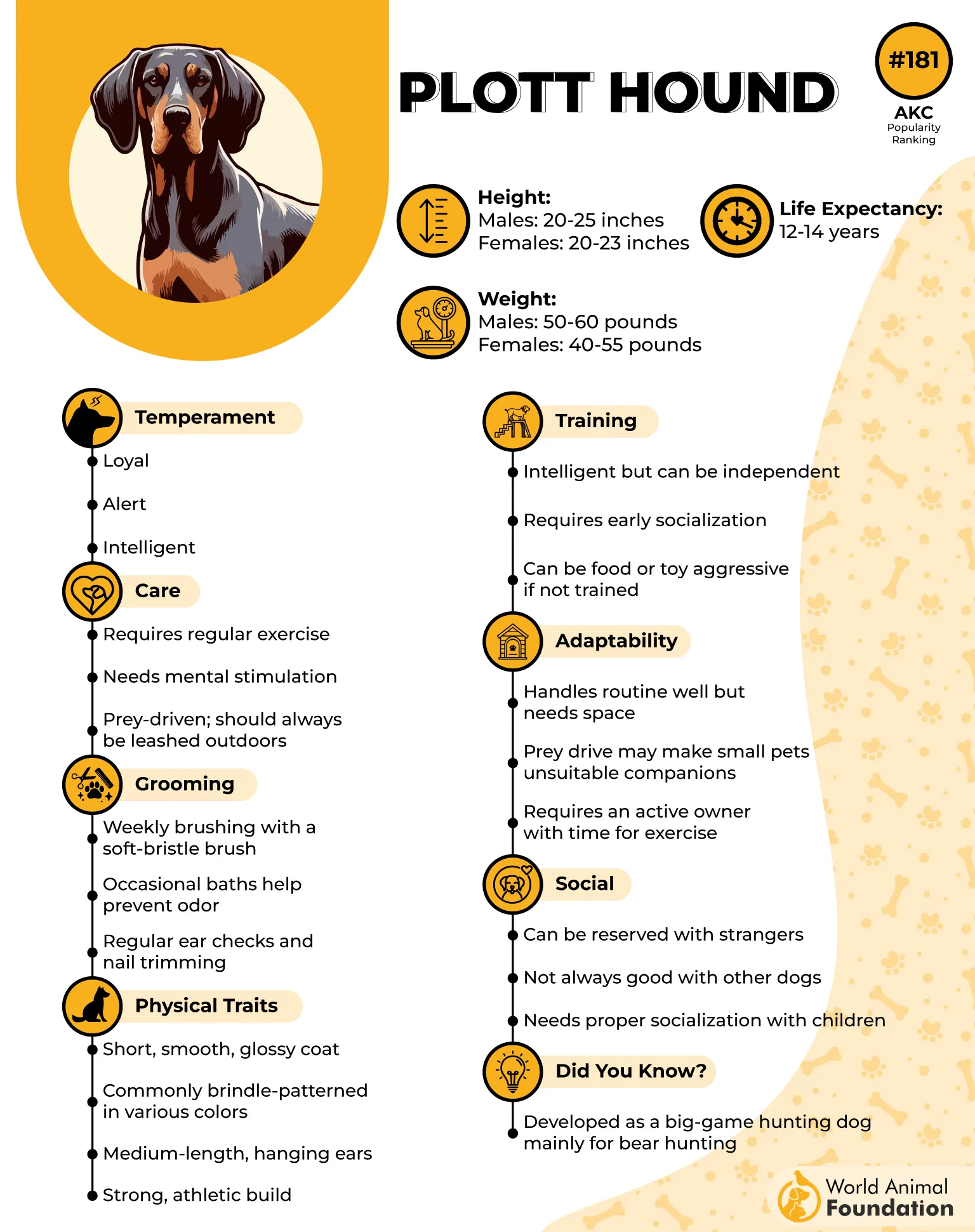
They have a distinct brindle coat and a sleek, medium coat that suits them well for outdoor work in all conditions. Despite their intense hunting instincts, they also enjoy family life. With proper exercise, Plott Hounds make loving and loyal family pets.
Their origins trace back to Johannes Plott, a German gamekeeper who brought hunting dogs to the U.S. in the 18th century. Since then, the breed has grown into one of the most reliable dogs for tracking deer and other tough quarry.
Hunting Profile
Primary game: Deer, bear, and other animals
Skills: Tracking, scent trailing, navigating dense terrain
Temperament: Brave, intelligent, and loyal
Training: Responds well to regular handling and exercise
Energy level: High; built for endurance
4. Beagle
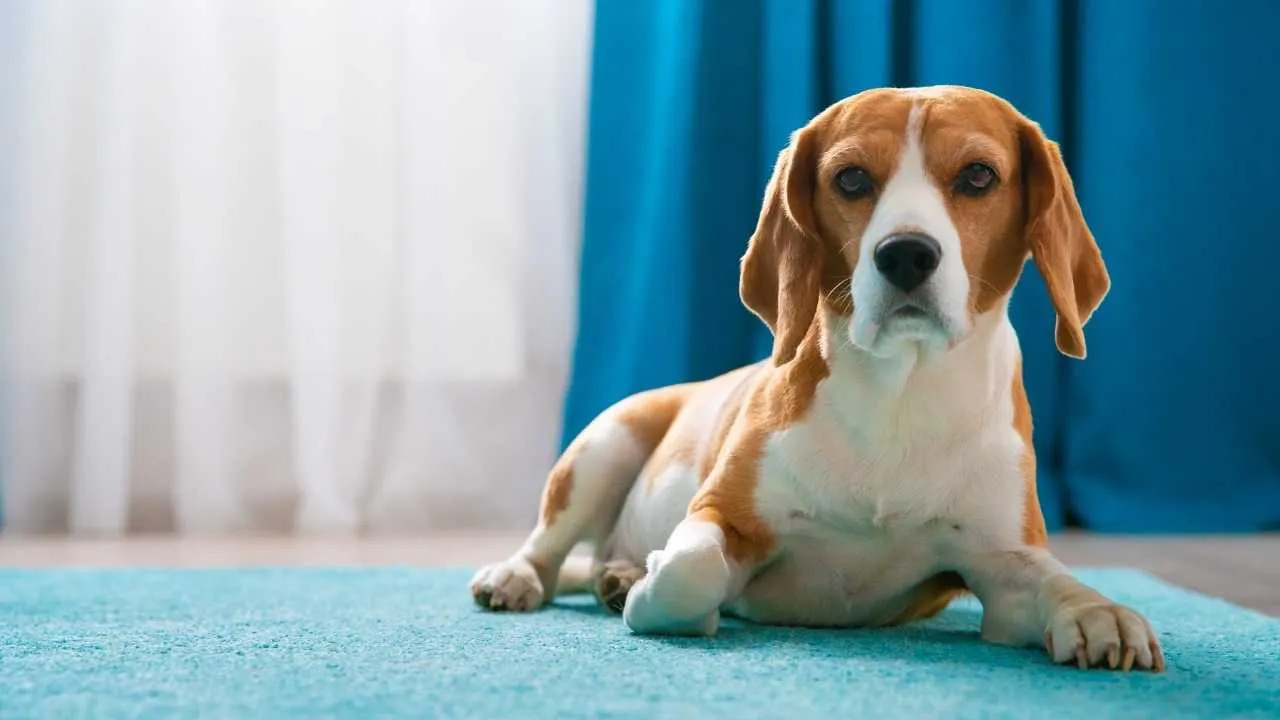
The Beagle is one of the most recognizable and beloved hunting dogs in the world. Originally developed in England for hunting small animals like rabbits and hares, Beagles are compact, determined, and incredibly sharp-nosed.
These dogs are known for their excellent noses, ranking among the top scent hounds used in both veterinary medicine and the field. Their strong sense of smell and focused tracking ability make them great hunters, especially in dense brush or tight spaces where larger breeds may struggle.
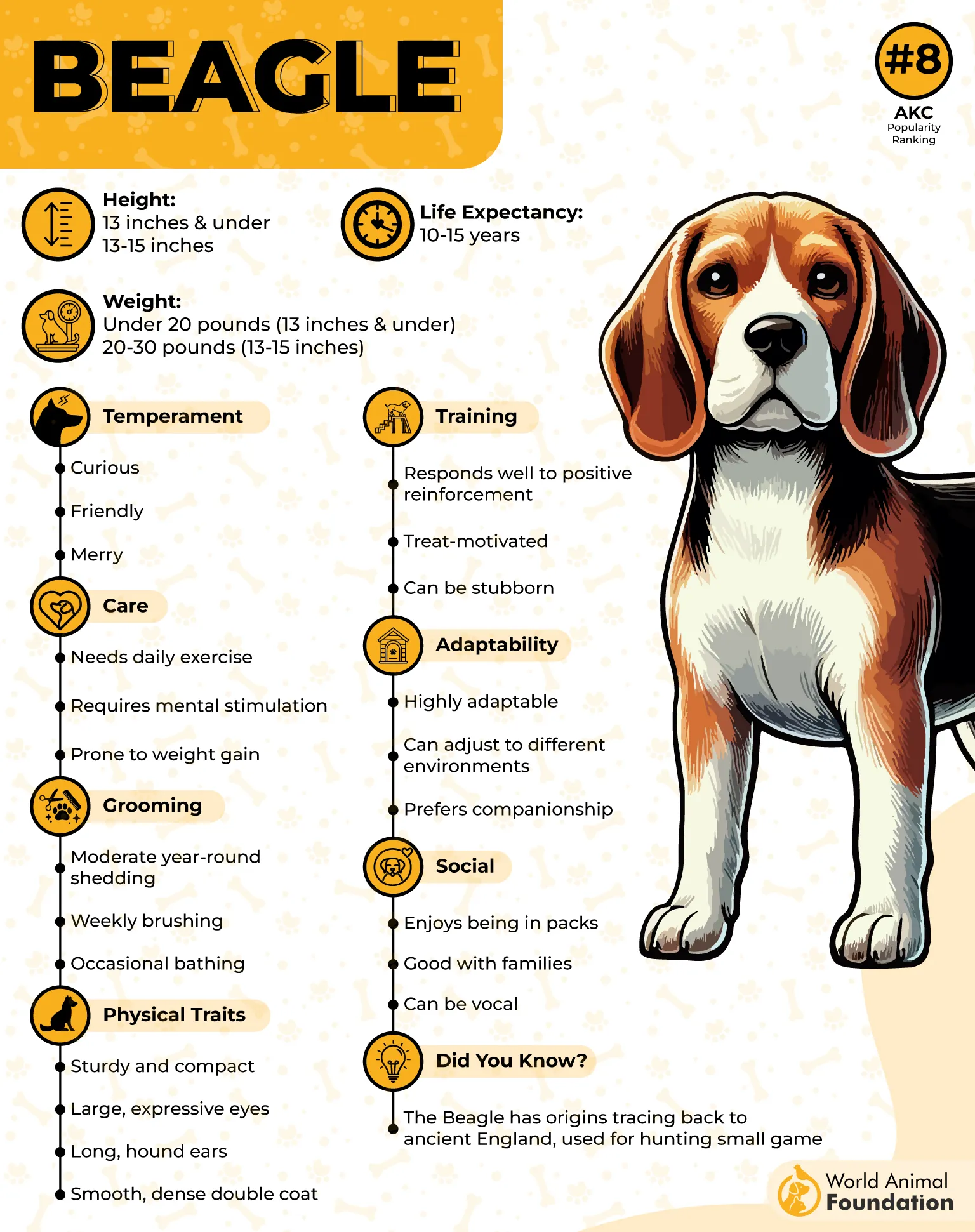
Like other scent hounds, Beagles have floppy ears and medium-length snouts. WebMD describes that when they lower their heads to the ground, their long ears hang close to their nose, helping to stir up and funnel scents directly toward it. This natural feature enhances their already impressive tracking skills.
Beagles also have short coats that are easy to manage in outdoor conditions. Many display the breed’s classic tan markings, often mixed with white and black.
Hunting Profile
Primary game: Rabbits and other small animals
Skills: Scent tracking, persistence, navigating tight spaces
Temperament: Curious, energetic, and focused
Training: Needs consistency and mental stimulation
Energy level: High; thrives with active use
5. English Setter
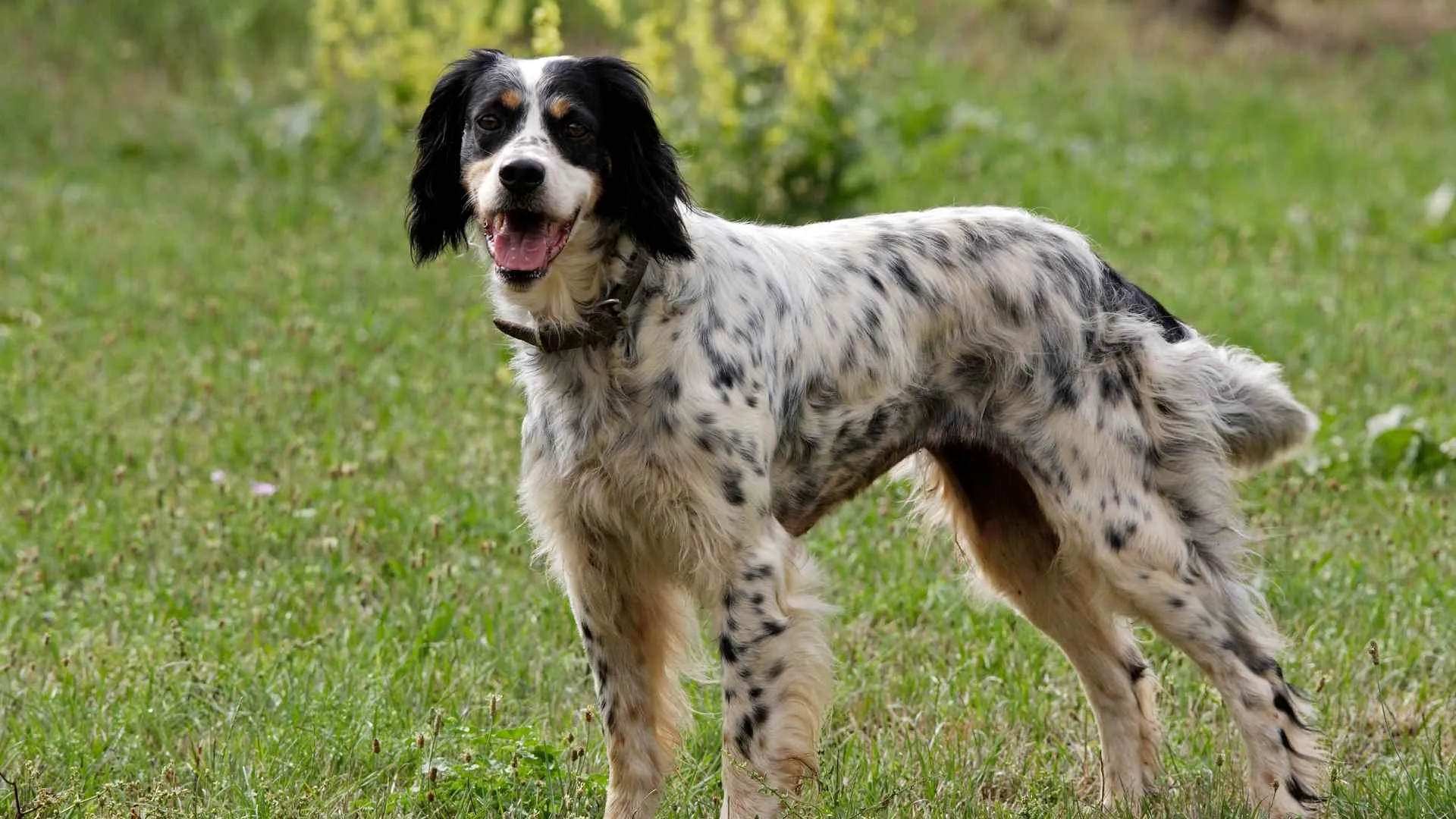
The English Setter is a graceful and stylish bird dog, known for its long, flowing coat and elegant presence in the field. With a large head and ticked markings, this breed is both rugged and refined—a perfect mix for hunters who appreciate performance and beauty.
Originally bred to locate upland birds like grouse and pheasants, English Setters were trained to quietly “set” when they found prey hiding in tall grass. Today, they’re still used to locate and retrieve downed birds, and in some cases, even retrieve ducks with skill and precision.
Though developed as a bird dog, the English Setter’s stamina and high prey drive also make it a capable companion for tracking deer.
When on the trail, they move with calm, deliberate strides—less about raw speed and more about persistence and control. Their ability to cover ground with poise allows them to follow larger game just as effectively as smaller quarry.
Hunting Profile
Primary game: Upland birds, ducks, and deer
Skills: Setting, pointing, retrieving downed birds and ducks
Temperament: Focused, stylish, and responsive
Training: Takes well to training with gentle handling
Energy level: High; sustained drive and field endurance
6. German Shorthaired Pointer
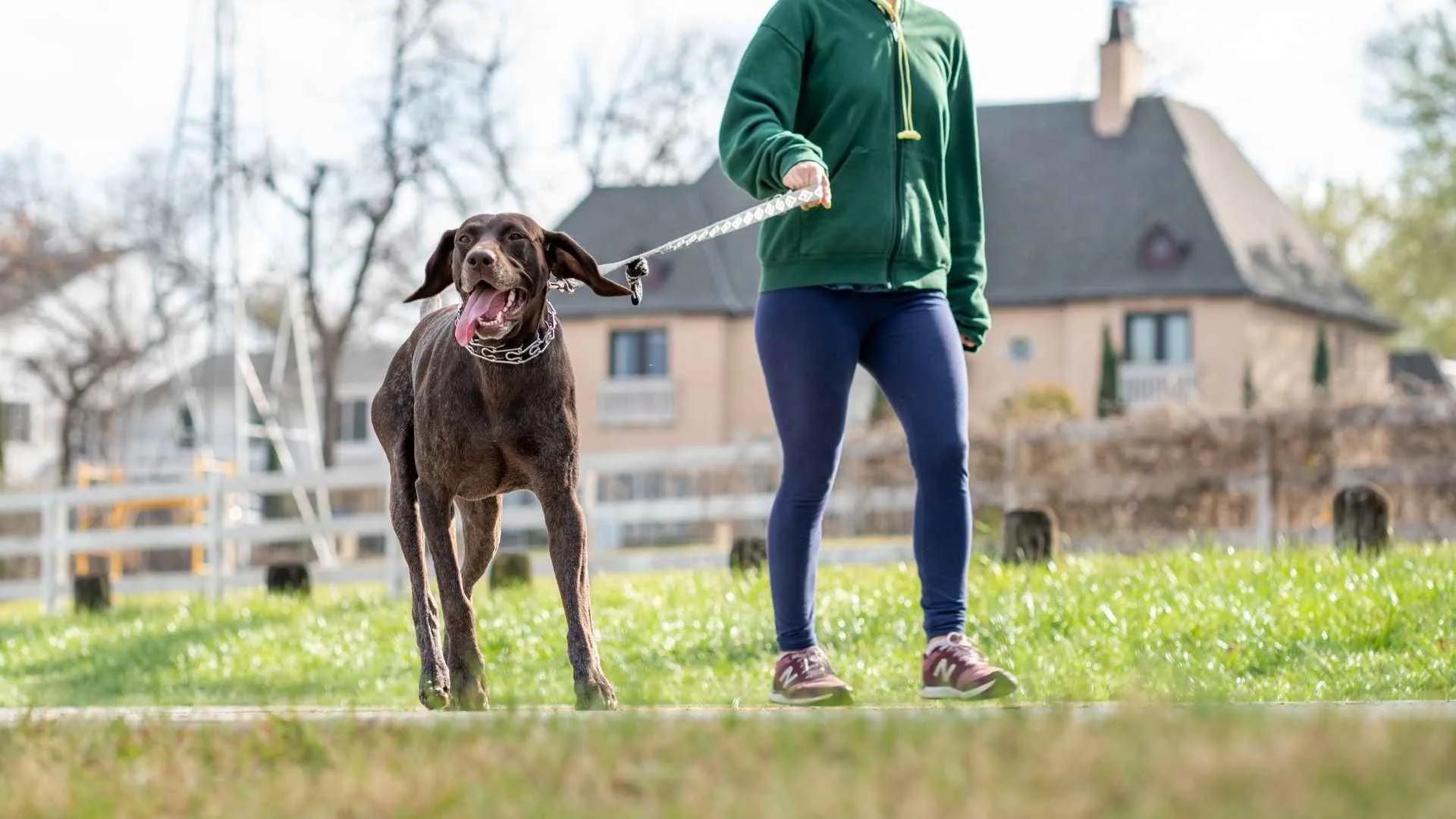
The German Shorthaired Pointer (GSP) is a versatile and athletic hunting dog, often called the “canine triathlete” for its ability to hunt, point, and retrieve. Agile, fast, and full of stamina, this breed thrives on long hours of activity and is well-suited for active owners.
GSPs are known as bird dogs—hunting dogs trained to locate or retrieve game birds. PetMD states that, unlike many other bird dogs, GSPs point and signal by stopping in place and standing still, their nose fixed in the direction of the scent.
In this poised stance, they await a cue from their hunter before flushing out the animal. This controlled and intelligent behavior makes them stand out in the field.
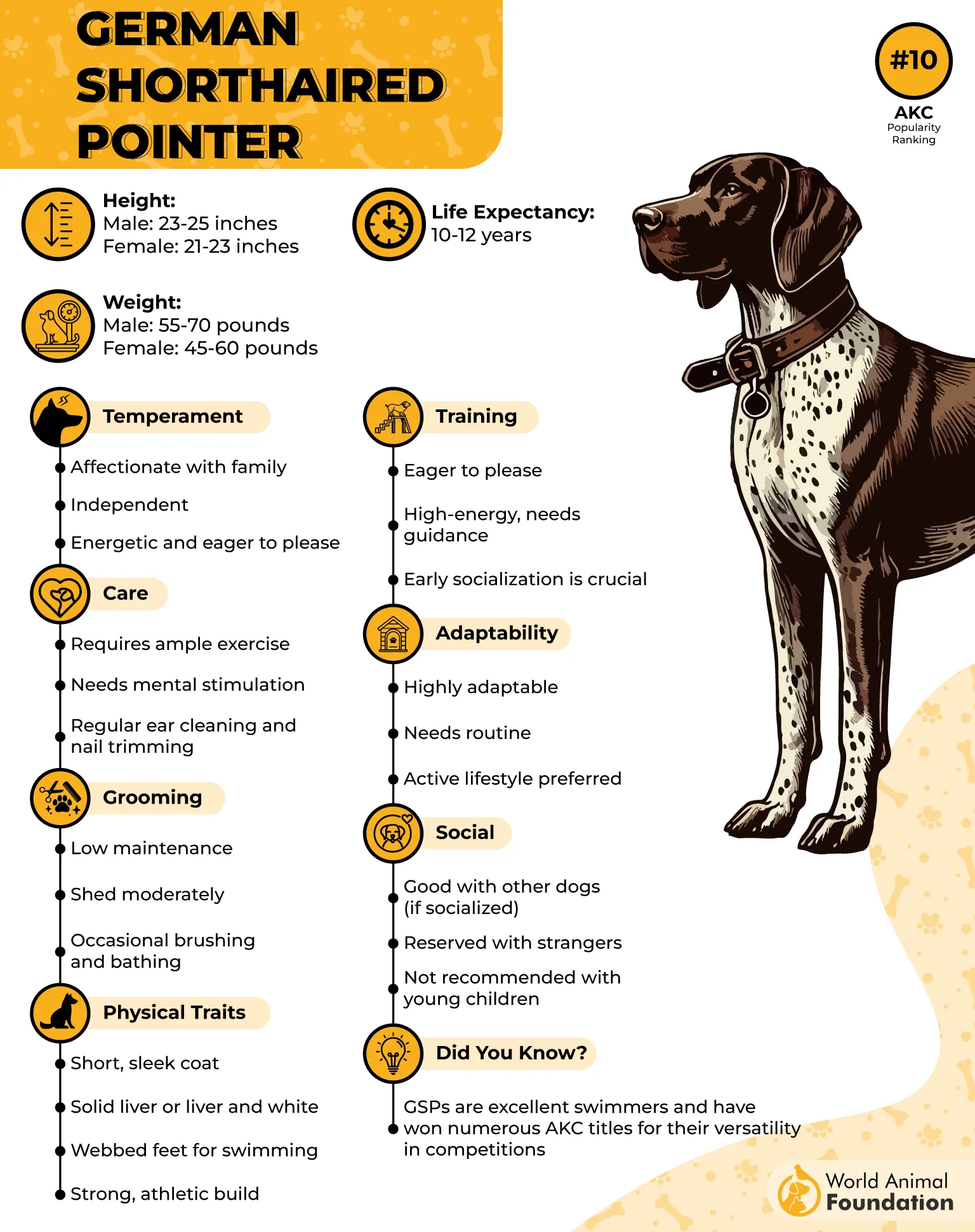
GSPs are also highly capable when it comes to hunting deer, using their powerful noses and impressive endurance to track game across all types of terrain. They work tirelessly and adapt well to challenging outdoor environments.
Equipped with webbed feet, they are strong swimmers and can retrieve in cold water, although their short, double coat is better suited to moderate climates rather than harsh conditions. Their sleek appearance often features ticking or a solid color, adding to their athletic, no-nonsense look.
Hunting Profile
Primary game: Birds, small game, and deer
Skills: Pointing, scent tracking, water retrieves
Temperament: Energetic, focused, and eager to please
Training: Needs daily structure and activity
Energy level: Very high; best for active lifestyles
7. American Foxhound
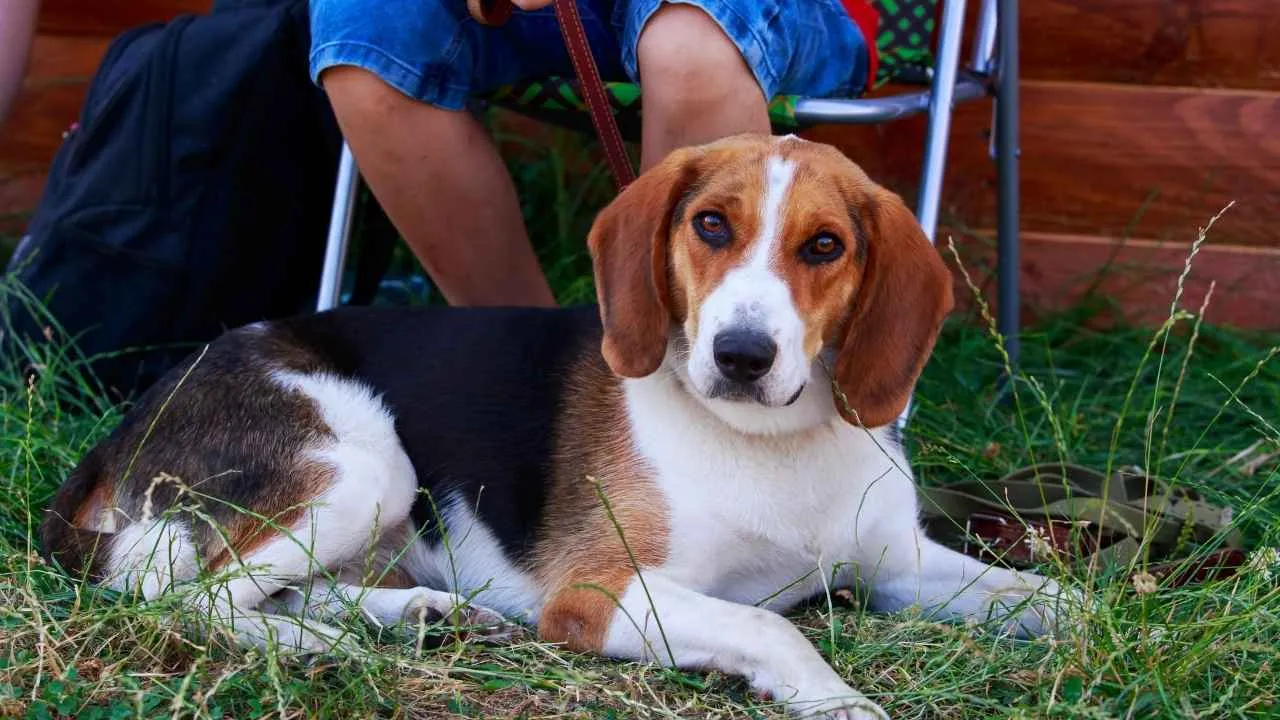
The American Foxhound is one of the oldest and most iconic hunting breeds in the United States. Originally developed in the 1700s from English Foxhounds, this breed was prized for its speed, endurance, and ability to cover large distances while chasing foxes and other game.
Built for the chase, American Foxhounds are lean, strong, and highly athletic. Their long legs and easy gait allow them to move swiftly through thick cover, tracking scents with unwavering focus. Though not typically used for retrieving skills, their talent lies in relentless pursuit and deep-chested endurance.
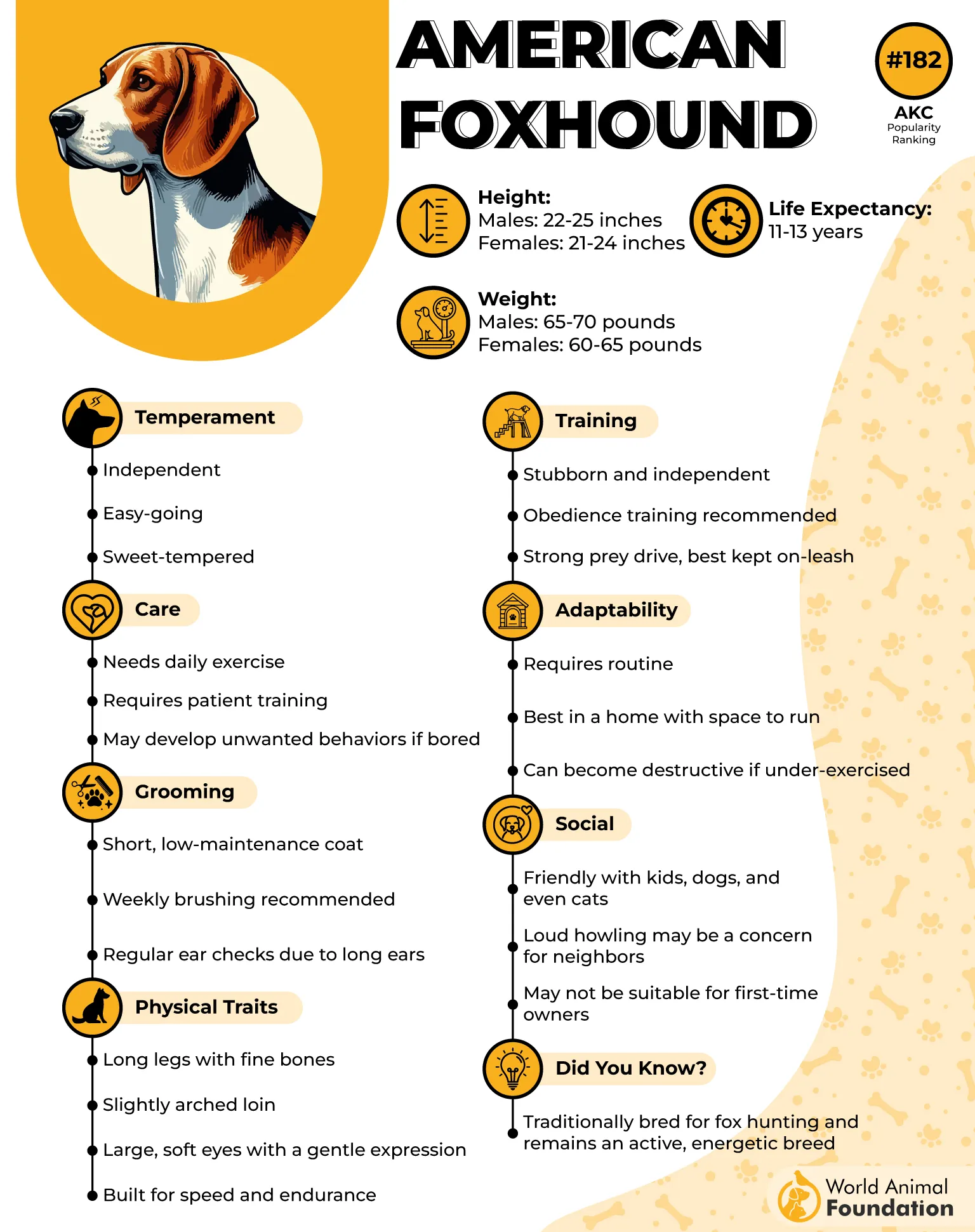
American Foxhounds are known for working well in packs. In fact, many dogs are often hunted together for greater success, and this breed thrives with other dogs around. They’re sociable, friendly, and prefer companionship, whether on the field or at home.
Their coat is of medium length, easy to care for, and durable enough for long hunts in the brush. The American Foxhound remains a classic choice for hunters who value tradition, drive, and stamina in a loyal four-legged companion.
Hunting Profile
Primary game: Foxes and other games
Skills: Scent tracking, navigating thick cover
Temperament: Gentle, driven, and pack-friendly
Training: Best in group settings; consistent handling
Energy level: High; thrives on extended hunts
Conclusion
Choosing the right hunting dog comes down to more than just instinct—it’s about matching the dog’s strengths with your hunting style and lifestyle. Whether you need a dog that can track tirelessly, retrieve from water, or navigate rugged terrain, there’s a breed that fits the job perfectly.
Apart from the ones mentioned above, there are other breeds as well that excel at deer hunting. These include the English Springer Spaniel, Labrador Retriever, Chesapeake Bay Retriever, Golden Retriever, English Pointer, and Boykin Spaniel.
Beyond their skill in the field, these dogs offer loyalty, companionship, and a shared passion for the outdoors. With the right training and care, your hunting dog won’t just be a partner on the trail—they’ll be a trusted friend for years to come.


